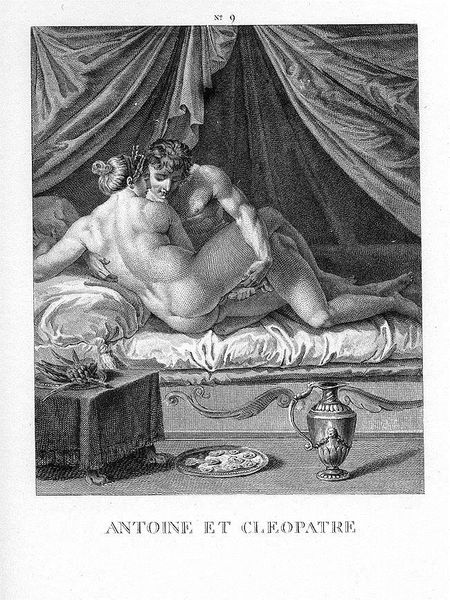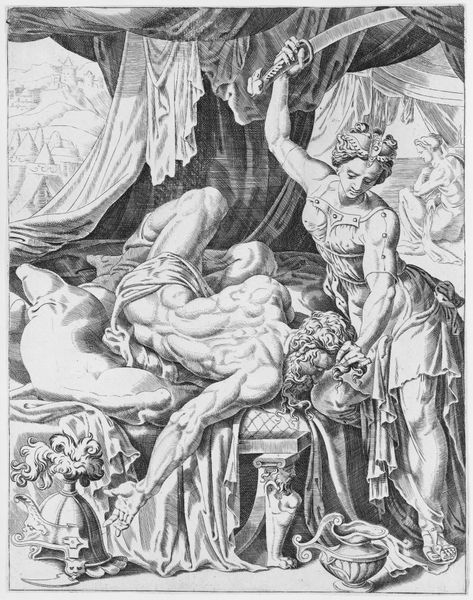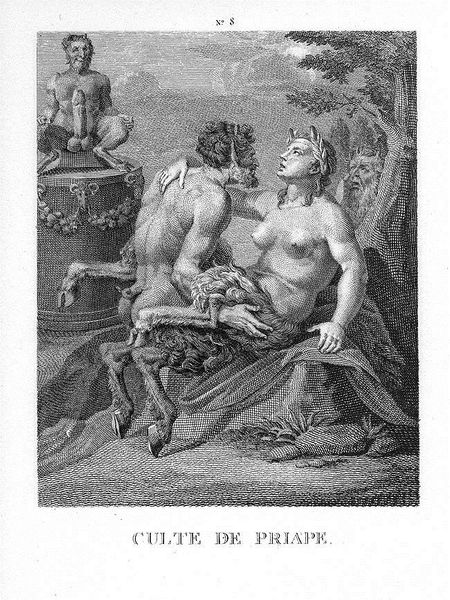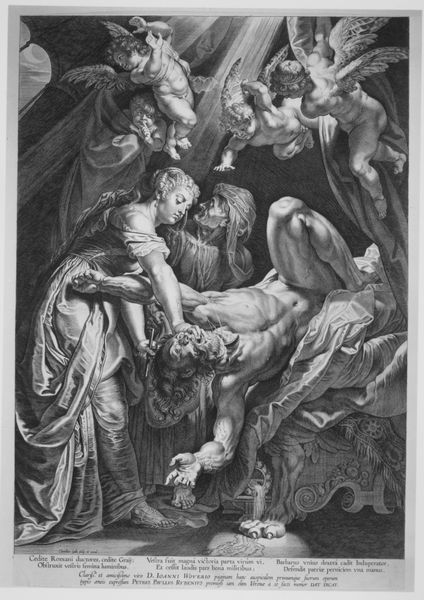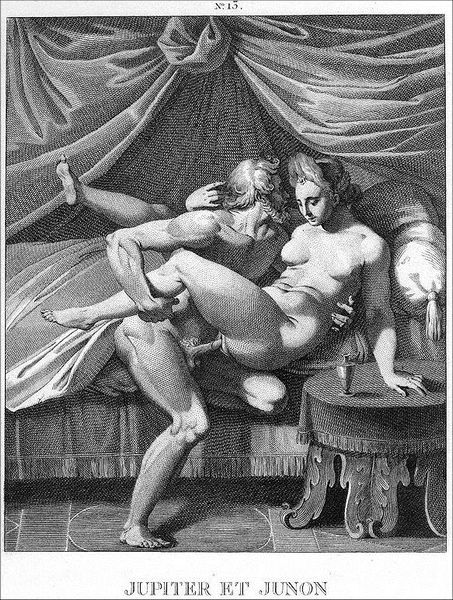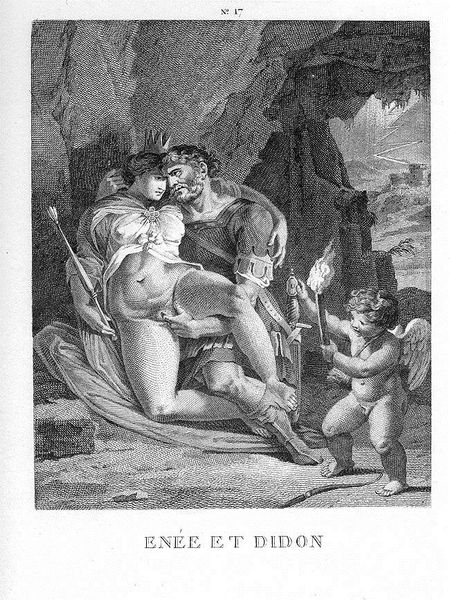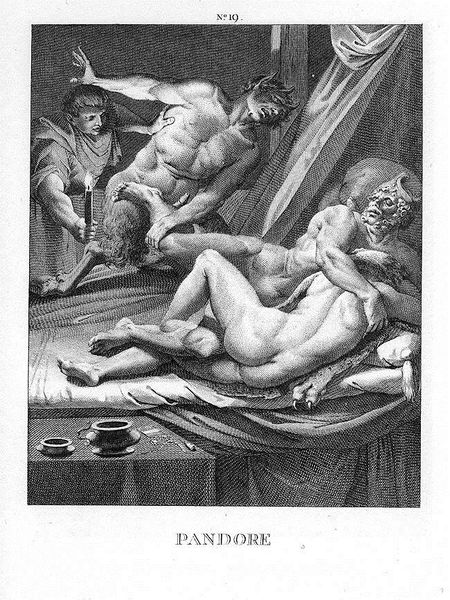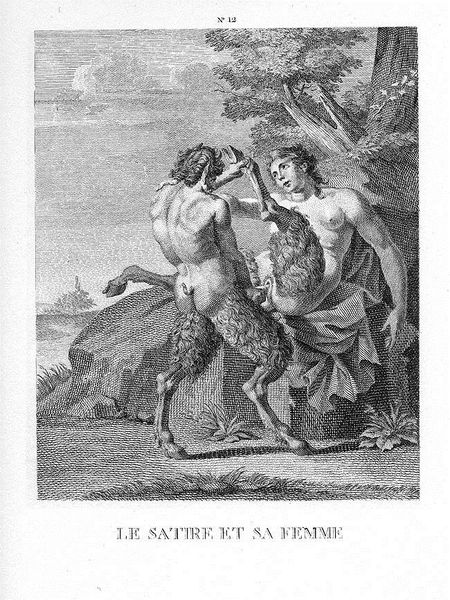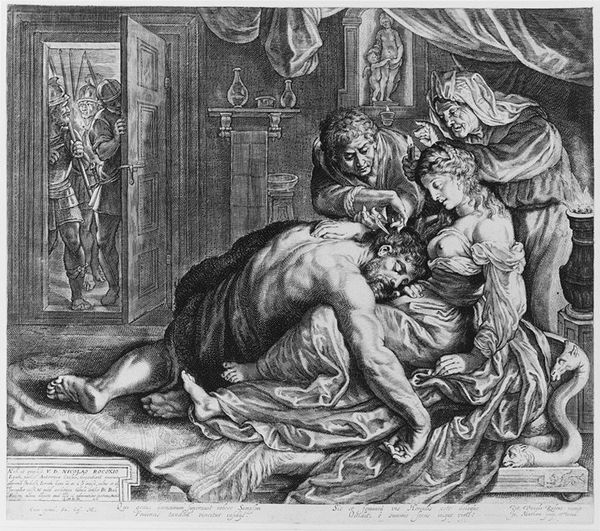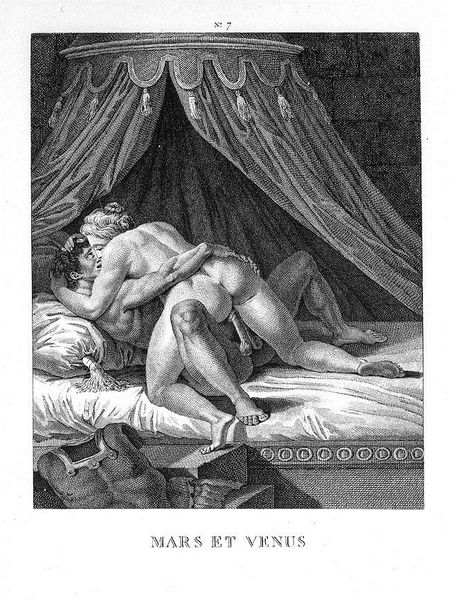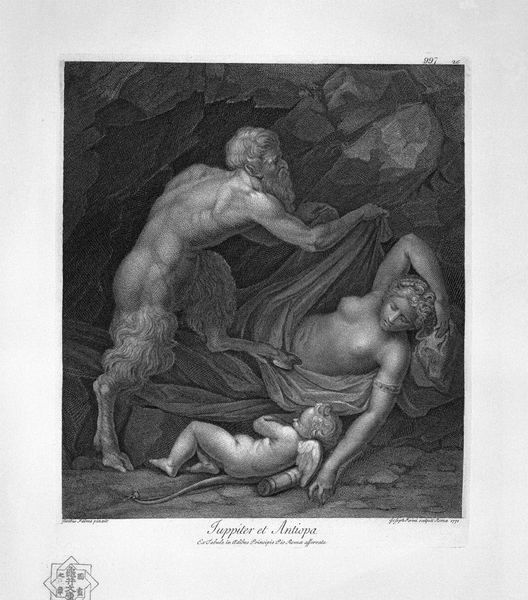
engraving
#
baroque
#
figuration
#
female-nude
#
line
#
history-painting
#
nude
#
engraving
#
male-nude
#
erotic-art
Copyright: Public domain
Agostino Carracci made this engraving entitled, “Messalina in Lisisica's booth” sometime in the late 16th century. It depicts a scene of supposed debauchery taken from the history of Imperial Rome. Carracci’s decision to represent this subject matter reveals the cultural preoccupation of his time. It speaks to the ways that historical narratives can become fodder for artists seeking to titillate audiences and comment on the perceived moral failings of the powerful. In the 16th century, the Catholic Church was facing its own crisis of legitimacy. As such, the story of Messalina, the notoriously unfaithful wife of Emperor Claudius, who allegedly engaged in prostitution, would have resonated with audiences concerned about corruption and moral decay within the highest echelons of society. To understand the meaning of this print more fully, we might consult historical texts about Roman history and examine other artworks from the period that deal with similar themes. This is key to understanding art as something contingent on social and institutional context.
Comments
No comments
Be the first to comment and join the conversation on the ultimate creative platform.
